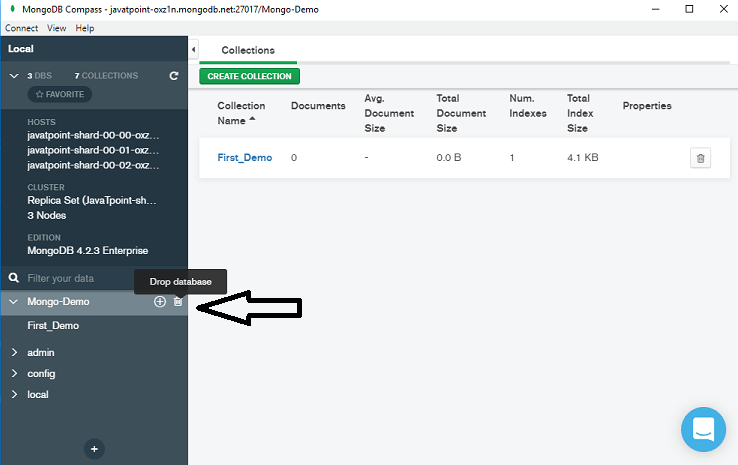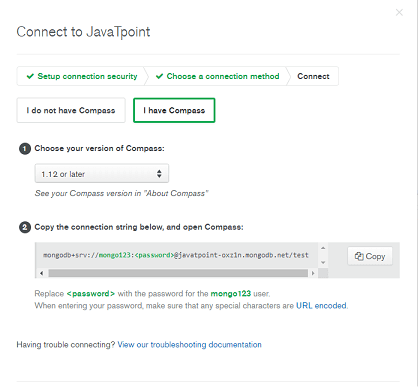

These values are used to order the indexed fields. In simplest terms, indexes store the values of the indexed fields outside the table or collection and keep track of their location in the disk.

Indexes are special data structures that store a small part of the Collection’s data in a way that can be queried easily. Use the right-hand menu to navigate.) What are indexes in MongoDB? (This article is part of our MongoDB Guide.

Mongodb compass unique values how to#
In this tutorial, I’ll walk you through different types of indexes and show you how to create and manage indexes in MongoDB. By limiting the number of documents to be queried, you’ll increases the overall performance of the application. Significantly slow down your applicationįortunately, using indexes fixes both these issues.Result in various performance bottlenecks.In MongoDB, querying without indexes is called a collection scan. When querying data without indexes, the query will have to search for all the records within a database to find data that match the query. Indexes provide users with an efficient way of querying data. Automated Mainframe Intelligence (BMC AMI).Control-M Application Workflow Orchestration.Accelerate With a Self-Managing Mainframe.Apply Artificial Intelligence to IT (AIOps).two distinct versions separate often stresses lack of connection or a difference in identity between two things. distinct indicates that something is distinguished by the mind or eye as being apart or different from others. What does it mean to be distinct?ĭistinct, separate, discrete mean not being each and every one the same. You can specify additional query options using the options object passed as the third parameter to the distinct() method. If you call distinct() on an document field that contains an array, the method treats each element as a separate value. The following example returns the distinct values for the field dept from all documents in the inventory collection: Starting in MongoDB 4.2, if the client that issued the db.collection.distinct () disconnects before the operation completes, MongoDB marks the db.collection.distinct () for termination (i.e. When to killop db.collection.distinct in MongoDB? This is very important and useful to retrieve distinct data from a single collection. Distinct: This will return only distinct data from the collection. We can retrieve distinct values from the collection by using distinct methods. How is the collection name defined in MongoDB?Ĭollection name: Collection name is defined as retrieved documents from the collection by using a distinct method. Finds the distinct values for a specified field across a single collection or view and returns the results in an array.
Mongodb compass unique values driver#
For corresponding MongoDB driver API, refer to your specific MongoDB driver documentation instead. This page documents the mongo shell method, and does not refer to the MongoDB Node.js driver (or any other driver) method. The query to create a collection with document is as follows − Which is the distinct method in mongo shell? The syntax is as follows − db.yourCollectionName.distinct(“yourFieldName”) To understand the above syntax, let us create a collection with document.

You can use distinct() method in MongoDB to get distinct record values. How to get distinct record values in MongoDB? distinct() method or the distinct command. For sharded collections, you cannot use the db.distinct() method/the distinct command as well as the aggregation pipeline with the $group stage. For unsharded collections, you can use the db.To perform a distinct operation within a transaction: How do I create a distinct query in MongoDB? createIndex() method with the unique option set to true.


 0 kommentar(er)
0 kommentar(er)
